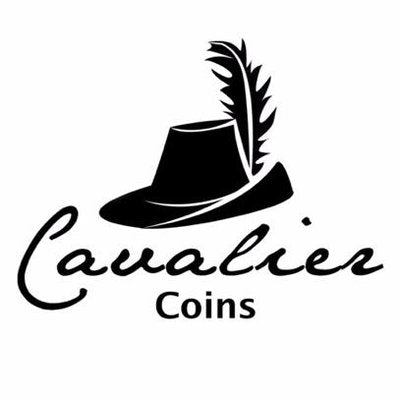Discovering the UK Collecting Scene That Actually Matters
Walking into a coin shop on Great Russell Street or a busy coin fair can feel like stepping into another world. Forget the stereotype of older collectors huddled over Victorian pennies – the UK coin collecting scene is way more diverse than that. It's a lively mix of experienced numismatists, excited beginners, and everyone in between, all drawn to the history whispered by these small metal discs. What makes one coin capture a collector's imagination while another sits unnoticed? It's a fascinating blend of history, rarity, and that spark of personal connection.
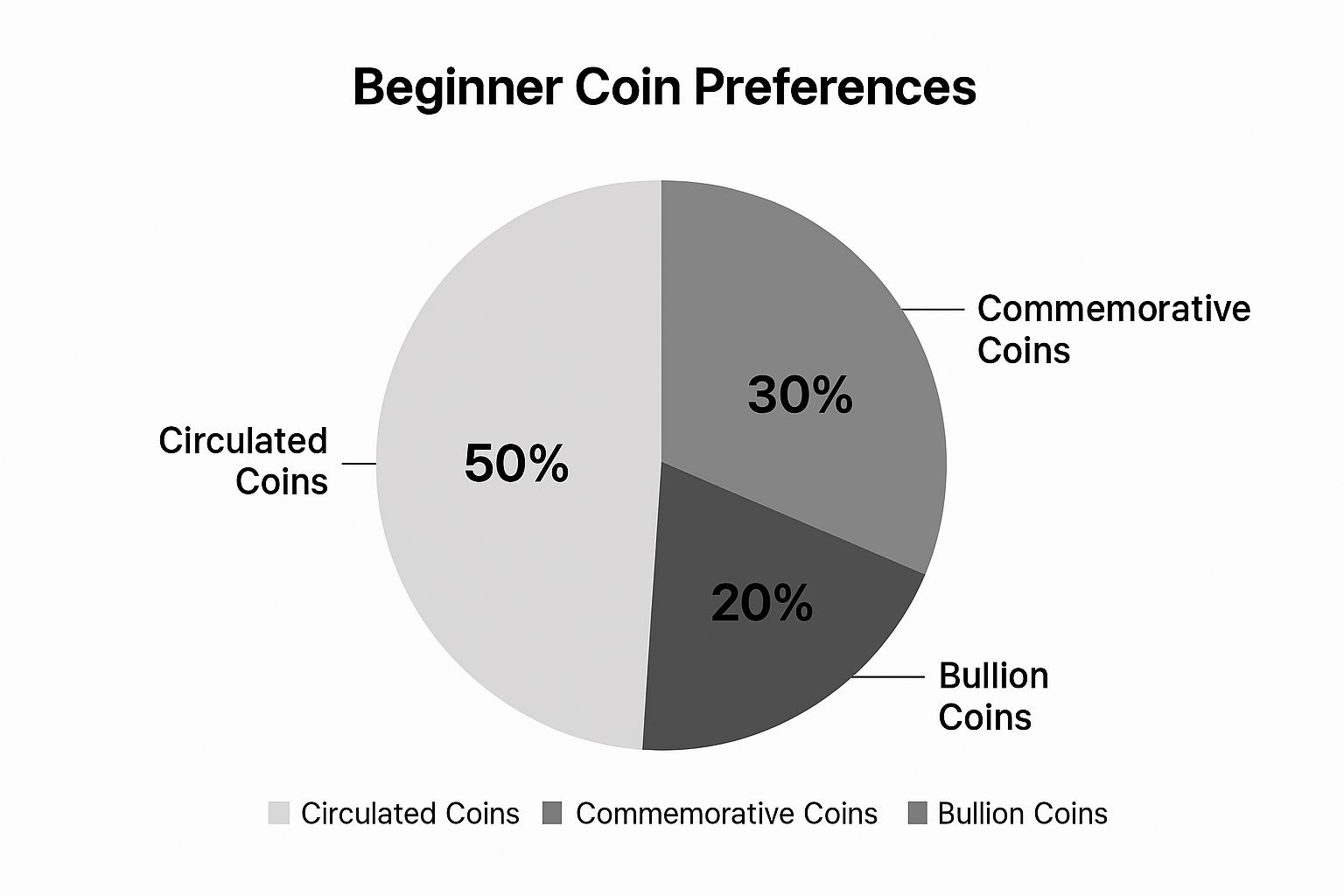
The infographic above gives you a snapshot of what draws new collectors in. See how 50% are intrigued by circulated coins, the kind you might find in your pocket change? Another 30% go for commemorative coins, attracted by their special designs and historical links. Then there’s the 20% who start with bullion coins, focusing on the precious metal content as an investment. It really shows how many different paths you can take as a beginner.
The connection between British history and what’s hot in collecting right now is really interesting. That everyday decimal coin from your childhood could be surprisingly valuable, while a shiny commemorative coin might not be as sought-after as you'd think. I remember chatting with a dealer who specialized in pre-decimal hammered coins. He explained how the little imperfections and variations in those hand-made pieces actually make them more valuable and historically interesting to collectors.

This screenshot shows you some of the UK coins currently in circulation, from pennies to pounds. It’s a good visual reminder of just how accessible this hobby is. You can literally start a collection with the change in your pocket! It's a tangible link to the UK's monetary system.
Navigating the UK Coin Market
Getting to grips with the UK coin collecting market means understanding its quirks. There are challenges like spotting fakes, dealing with market ups and downs, and keeping up with how collector demographics are changing. But the UK market is still thriving, especially for rare finds. Take the 2009 Kew Gardens 50p coin. With a mintage of just 210,000, they're incredibly scarce and can go for over £150.
Trends like historically significant pieces and the increasing use of digital platforms like eBay are also shaping the UK market. It’s this blend of the traditional and the modern that makes UK coin collecting so dynamic and appealing to both new and seasoned collectors. Want to dig deeper into the UK coin market? Check out this report: United Kingdom (UK) Coin Collecting Market Outlook.
Finding Your Collecting Niche
The collecting world has its own kind of hierarchy, from casual collectors focusing on specific themes to serious investors hunting for rare and valuable pieces. Learning to tell the difference between real expertise and amateur enthusiasm is key. It's all about asking questions, going to local coin fairs, and joining online communities. Those conversations will give you invaluable insights into how the collecting world really works.
This brings us to something really important for beginners: figuring out your own collecting philosophy. To help you get started, here's a look at some popular categories:
Popular UK Coin Categories for Beginners
| Category | Price Range | Availability | Learning Difficulty | Investment Potential |
|---|---|---|---|---|
| Circulated Pre-Decimal | £1 - £1000+ | Moderate | Medium | Moderate |
| Decimal Coins | £0.01 - £100+ | High | Easy | Low |
| Commemorative Coins | £2 - £50+ | High | Easy | Low to Moderate |
| Bullion Coins | Price of metal + premium | Moderate | Easy | Moderate to High |
| Error Coins | Varies widely | Low | High | High |
This table gives you a quick comparison of different coin categories, how easy they are to find, how much you might need to learn to appreciate them, and their potential for increasing in value. As you can see, there’s something for everyone, from easily accessible decimal coins to the more challenging world of error coins.
So, where do you want to start your collecting journey? What sparks your interest? Thinking about these questions will help you build a collection that you truly love.
Finding Treasure in Your Everyday Change
So, you’re thinking about starting a coin collection? One of the coolest things – and I speak from experience – is that your collection can start right in your pocket! Finding a gem amongst your everyday change is a genuine thrill, and it happens more than you think. I still remember finding a beautifully preserved 1937 penny tucked away in my wallet when I first started. It wasn't anything super valuable, but the excitement of that find hooked me.
This kind of treasure hunting is easy to get into. Forget metal detectors and buried treasure maps—it’s all about training your eye to spot the unusual. I have a friend who works as a cashier, and she once pulled a 1922 half-crown out of her till. Not a rare error or anything, but because of its age and condition, it was definitely collectible. That got her checking her change religiously, and she soon found a 1947 florin with a weak strike—a common error that adds a little extra value.
Spotting the Unusual in the Ordinary
So, how can you tell if a coin is worth more than its face value? Age is part of it, but certain dates and variations can significantly increase a coin's worth. For UK collectors, the 1983 'New Pence' 2p coin, with its famous minting error, is a holy grail. Then there are the subtle things: a die crack, a doubled image, or an off-centre strike. These little imperfections can actually make a coin more valuable.
Condition is also king. A well-preserved coin will always command more than a worn-out counterpart. This is where coin grading comes into play. We’ll dive into that more later, but for now, just remember that a shiny, uncirculated coin is generally more desirable. It's interesting to note that the global coin collecting market is booming, reaching an estimated $18.10 billion in 2023. The increasing popularity of collecting, coupled with cool innovations in new coin designs, is driving this growth. You can check out more about it here.
Expanding Your Hunting Grounds
Your pockets are just the start! Bank branches (some are friendlier than others about giving out rolls of coins) can be a good source. Getting to know your local shopkeepers can also be a great way to access circulating coins. Just remember to be polite and ask before digging through their tills!
Timing can be key, too. After a big event or holiday, commemorative coins often slip into circulation. That's a great chance to find something special. As you get more experienced, you’ll start to notice patterns. Perhaps a certain shop always seems to have older coins, or a particular bank is known for dispensing rolls of interesting pennies. Developing these little “coin hunting instincts” is part of the fun!
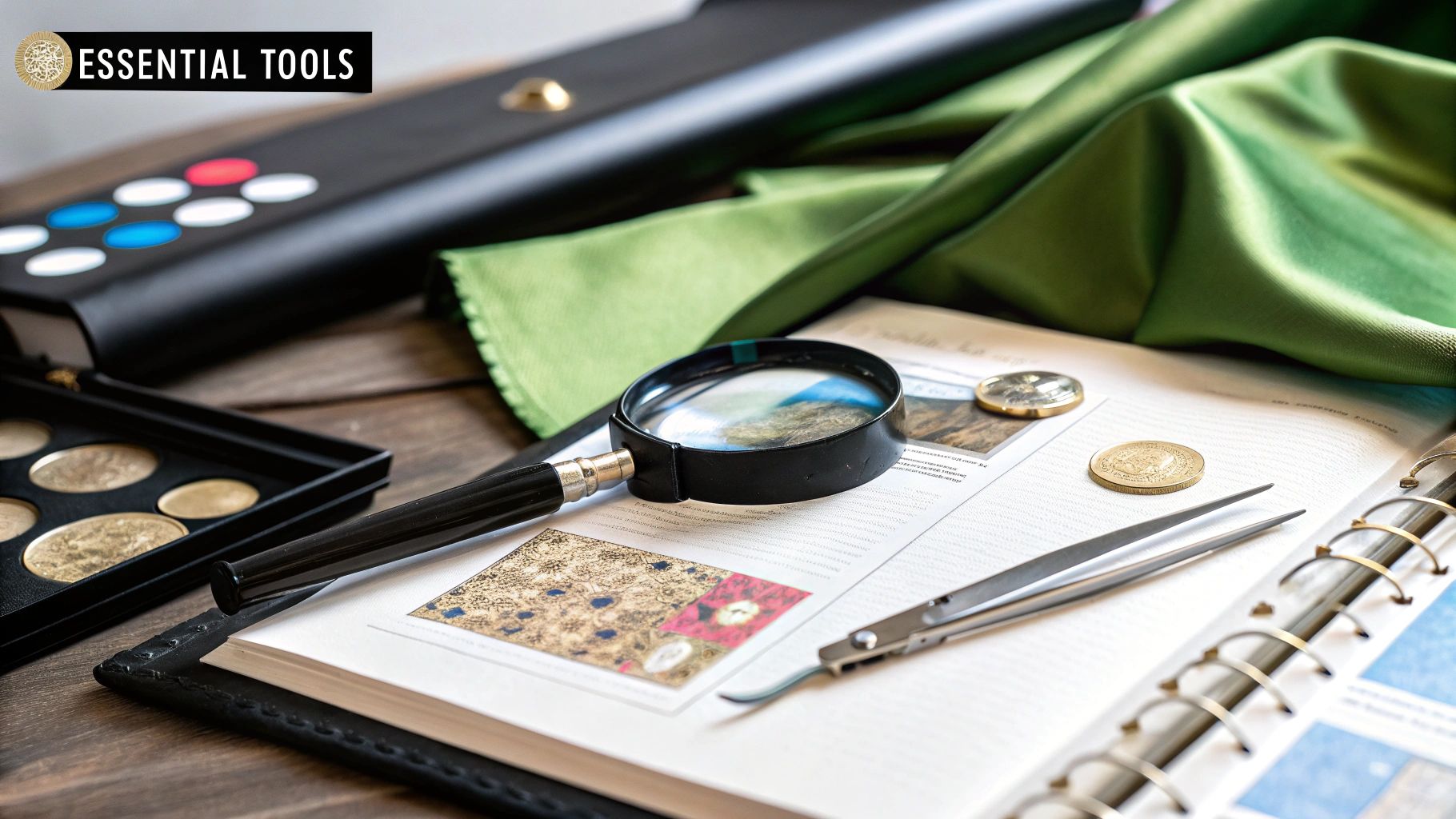
Crafting Your Personal Collection Philosophy
Picking up coins randomly just leads to a jumbled mess and, honestly, a lot of regret later on. Believe me, I’ve been there! The truly impressive collections I’ve seen are built with a clear vision. This personal collecting philosophy guides decisions and helps resist impulse buys. It's like a roadmap, navigating the exciting (and sometimes overwhelming) world of numismatics.
Defining Your Collecting Focus
A collecting philosophy comes down to why you collect. What draws you in? Is it the history behind the coins? The thrill of finding rare pieces? The artistry and design of different eras?
-
The Completionist: These collectors aim for complete sets. Think every date and mint mark of a specific series. This requires serious research and often a significant investment.
-
The Historian: These collectors build around a narrative, maybe a specific period or event. I know someone who collects coins from Queen Victoria's reign, creating a tangible link to that era.
-
The Investor: Coins can be an investment, focusing on rare pieces with high potential value. This requires deep market knowledge and a long-term perspective.
For those starting out with UK coins, understanding market value is key. Guides like the 'British Coins Market Values 2025' provide pricing information for over 2,000 years of British coinage. The demand for rarities, like the 2009 Kew Gardens 50p and the 1983 'New Pence' 2p, drives up their value, making them attractive investments. Online platforms also make it easier than ever to find coins and data. Check out more insights here.
The Power of Budget Constraints
Limited funds can actually improve your collection. It forces you to be more selective, research thoroughly, and truly appreciate each addition. It pushes you to become discerning, not just an accumulator.
Here's a table summarizing some different approaches:
Beginner Collection Strategies Comparison: Analysis of different collection approaches including startup costs, difficulty level, and potential returns.
| Strategy | Initial Investment | Time Commitment | Learning Curve | Long-term Potential |
|---|---|---|---|---|
| Date Set (e.g., all pennies from a specific decade) | Low to Moderate | Moderate | Low | Moderate |
| Type Set (e.g., all silver coins from a country) | Moderate to High | High | Moderate | High |
| Theme Set (e.g., coins depicting ships) | Low to High | Variable | Low to Moderate | Variable |
This table demonstrates how various strategies offer different levels of investment, time commitment, and potential return. Choosing a strategy aligned with your resources and goals is key.
Building a Sustainable Collection
Consider the psychology of collecting. What truly motivates you? What brings you satisfaction? Is it the thrill of the hunt? The quiet pleasure of organizing your treasures? Understanding this builds a collection that sustains your interest. You might find this helpful: Mastering the Craft: Top 5 Tips When Collecting Coins.
Don't just make an inventory list. Think about how you'll display your collection. A well-organized collection is visually appealing and a powerful tool for learning. Try different albums, display cases, or software.
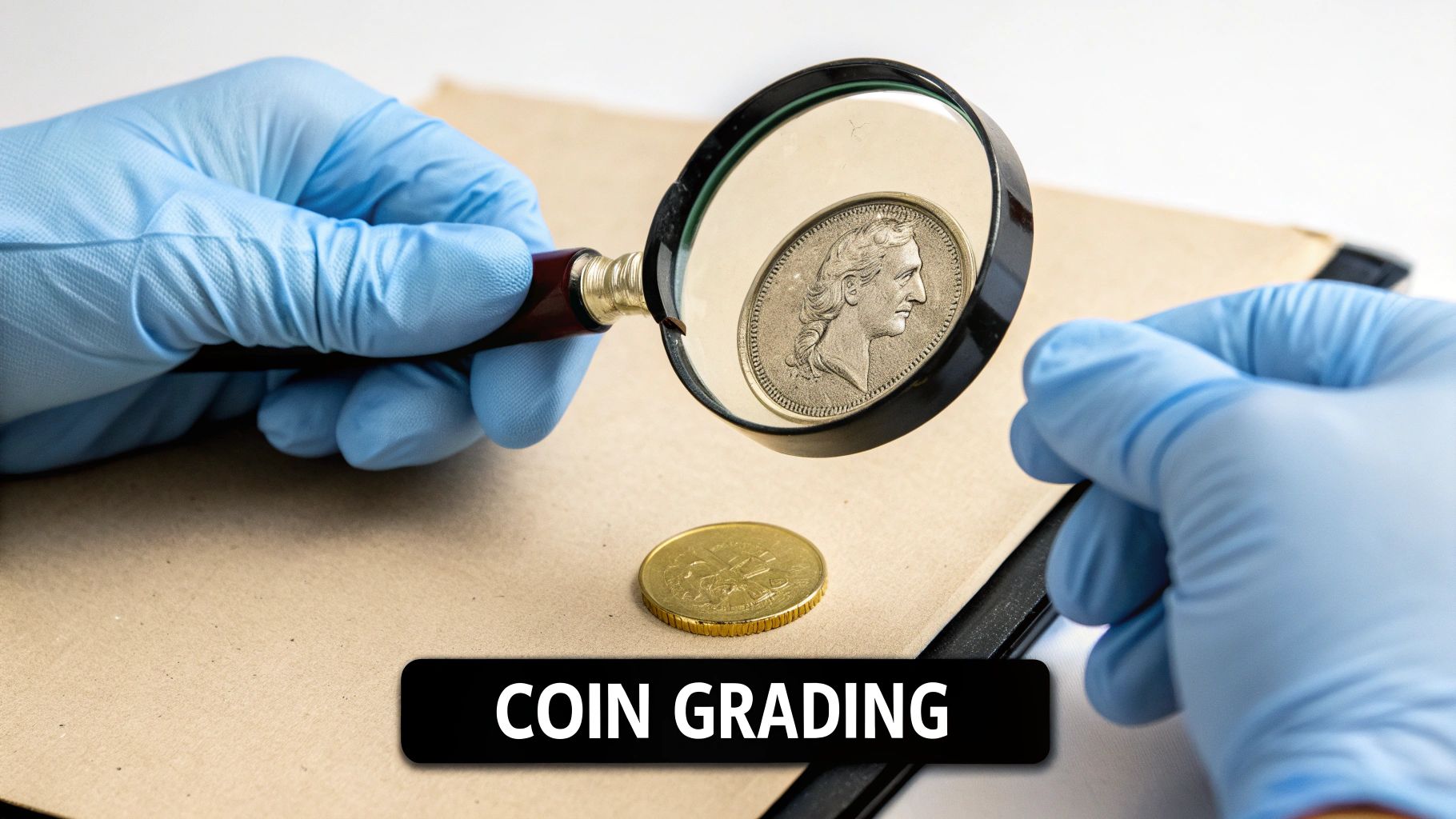
Refining Your Acquisition Strategy
A clear philosophy helps you make smart purchases. It's a framework to evaluate potential acquisitions against your collecting goals. Does this coin fit? Does it contribute to my overall vision? These questions become second nature.
Effective research is crucial. Knowing where to look—online resources, auction catalogues, dealer networks—helps you uncover hidden gems and avoid overpaying. It's all about continuous learning and refining your approach, building a collection you’ll treasure for years to come.
Mastering the Art of Coin Acquisition
A solid collecting philosophy gives your collecting purpose, but knowing where and how to buy coins transforms the experience from frustrating to fulfilling. Each avenue for acquiring coins, whether it's a lively coin fair, an online auction, or a local coin shop, has its own distinct culture, pricing, and unwritten rules. It's like learning a new language; once you grasp the basics, navigating the marketplace becomes much easier.
Decoding the Dealer's Landscape
Understanding dealer margins and recognizing fair market value is essential. Reputable dealers earn a profit, of course, but they also offer valuable expertise and access to coins you might not find elsewhere. Early in my collecting journey, I overpaid for a George V sovereign. It was a hard-learned lesson about researching prices and comparing what different dealers offer.
Now, I always check online marketplaces like eBay and auction results to get a sense of a coin’s real value. Learning from seasoned collectors is invaluable, too. Don't hesitate to ask questions and build relationships with reputable dealers; they're often a treasure trove of information. Here’s a great resource: Seven Tips for Buying Collectable Coins.
Learning to “read” a dealer is crucial. Are they truly knowledgeable, or are they just enthusiastic hobbyists? Do they openly share information, or are they vague about a coin’s history and condition? These subtle cues can reveal a lot about a dealer’s trustworthiness.
Timing Your Purchases
Like any market, coin availability and pricing ebb and flow. Certain times of year, such as after major holidays or commemorative releases, can present excellent buying opportunities. Other times, especially around large coin shows or auctions, prices can inflate due to higher demand.
Knowing when to seize a deal and when to wait patiently requires experience. I once found a rare silver threepence at a car boot sale simply because the seller didn't know its value. It pays to be patient and watchful!
Navigating the Online Marketplace
Online buying opens up a world of possibilities, but it also has unique challenges. Checking a seller's credibility is paramount. Review their feedback, look for detailed descriptions and clear photographs, and be wary of deals that appear too good to be true. I learned this the hard way when an online purchase of what I thought was an uncirculated shilling turned out to be heavily worn. It taught me to carefully examine photos and ask sellers specific questions about a coin's condition.
Interpreting photographs accurately can be tricky. Look for clear, close-up images of both sides of the coin. Request additional photos if you're unsure. Understanding how lighting and angles affect a coin's appearance helps avoid disappointment.
Also, remember the risks of online fraud. Use secure payment methods like PayPal and shop on reputable platforms. Never send cash or wire money to an unknown seller. Mastering these acquisition skills empowers you to build a collection you truly cherish. It's not just about acquiring coins; it’s about growing your knowledge, honing your instincts, and engaging with the captivating world of numismatics.
Protecting Your Investment Through Proper Care
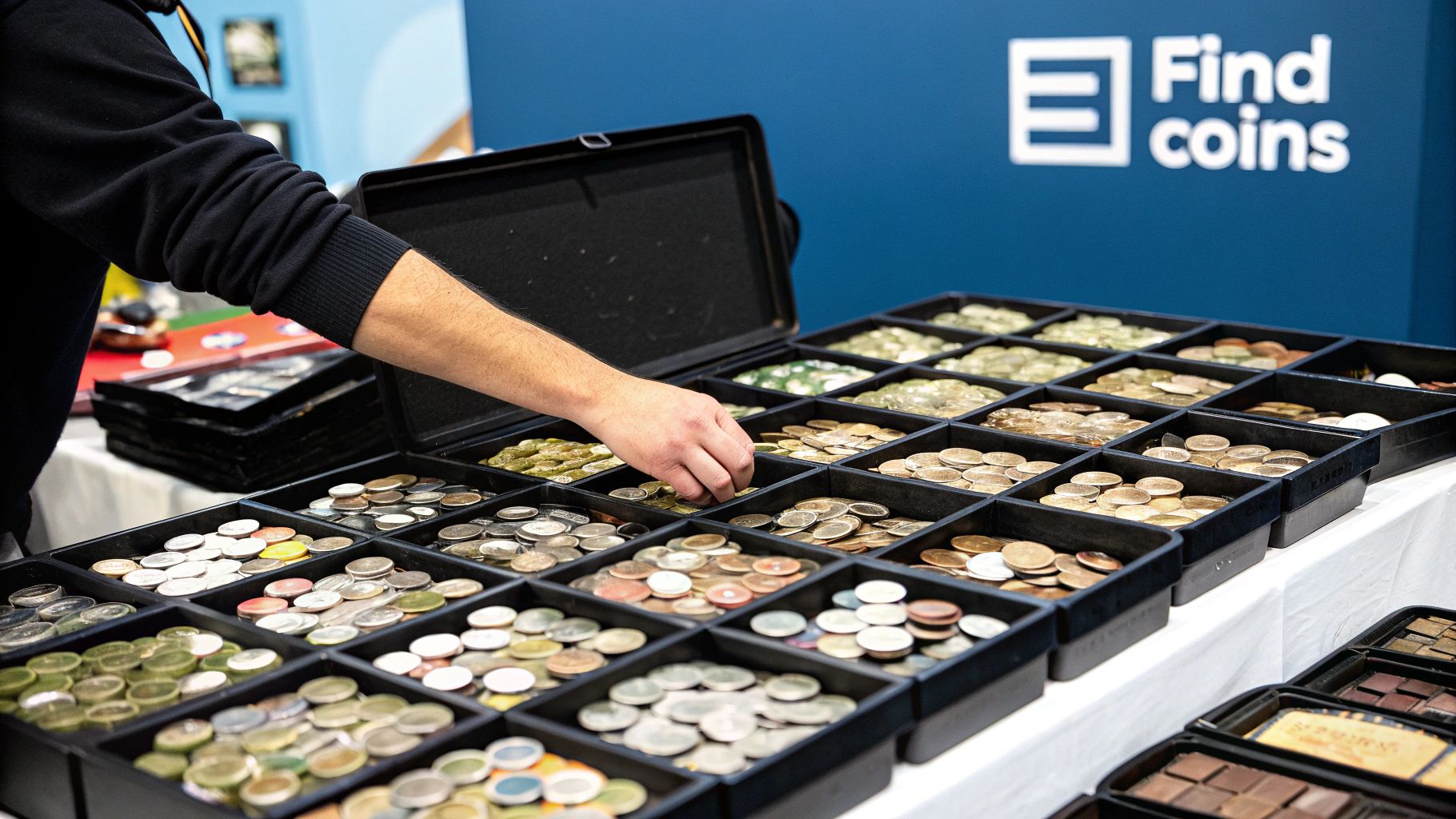
Getting your hands on some interesting coins is just the first step in the exciting world of coin collecting. You might be surprised to know that the difference between a coin worth a few bucks and one worth a small fortune often boils down to its condition. I've heard stories from seasoned collectors – some real nail-biters – about valuable pieces practically disintegrating due to improper storage. Trust me, those are lessons you don't want to learn the hard way.
The Science of Coin Degradation
Understanding how things like the environment, handling, and storage materials affect a coin's lifespan is crucial. Environmental factors, such as swings in humidity and temperature, can cause corrosion. Even something as seemingly harmless as the oils from your fingertips can etch into a coin's surface over time. I once saw a beautiful Victorian shilling, absolutely ruined by fingerprints that had corroded the silver over decades. It was heartbreaking.
Similarly, using the wrong storage materials can be a disaster. Cardboard, for example, contains sulfur, which reacts with metal and causes unsightly toning. This significantly reduces a coin’s value. Cheap PVC plastic, often found in coin flips, releases gases that can damage coins over time. I remember a friend who stored his entire collection in a cardboard box in his attic – not a good idea. The fluctuating temperatures and humidity, combined with the sulfur in the cardboard, wreaked havoc on his coins.
Storage Solutions That Work
The good news is you don't need Fort Knox to protect your coins. Simple non-PVC coin flips, Mylar sleeves, and acid-free albums are all cost-effective ways to keep your collection safe. For your more valuable coins, airtight capsules offer the best protection against environmental damage. Many collectors, myself included, also toss a few silica gel packets into their storage containers to absorb any excess moisture.
Think of proper storage as creating a comfortable, stable environment for your coins. It's about protecting them from the elements and any harmful substances, ensuring they retain their beauty and value for years to come.
The Dangers of Over-Cleaning
One of the biggest traps new collectors fall into is over-cleaning their coins. While a gentle wipe with a soft cloth to remove surface dust is usually okay, harsh cleaning methods can scratch a coin’s surface and instantly decrease its value. It's like sanding down a piece of antique furniture – you’re essentially removing the original finish and altering its history. You might find this interesting: How to Clean Dirty and Rusty Coins.
For serious cleaning, it’s best to leave it to the professionals. Professional coin conservation services can sometimes work wonders on a damaged coin, but it's an added expense best saved for truly valuable pieces. Honestly, it's often better to preserve a coin in its original state, even with some imperfections, than to risk causing further damage by trying to clean it yourself.
Record-Keeping and Insurance
Keeping good records is absolutely essential. Maintain a detailed inventory of your collection, including dates, mint marks, grades, and purchase prices. Photographs are also incredibly helpful, especially for insurance purposes. Many collectors overlook insurance, but it's a critical safeguard against theft, fire, or other unexpected events. Seriously, consider adding a rider to your homeowner's or renter's insurance policy to cover your collection – it’s worth it.
Protecting your coin collection isn’t just about preserving its monetary value; it’s about safeguarding the history, artistry, and personal connection these little treasures hold. By following these simple tips, you can ensure that your collection remains a source of enjoyment and fascination for generations to come.
Connecting With Fellow Collectors Who Share Your Passion
Coin collecting can be a deeply rewarding hobby, but it doesn't have to be a solo journey. In my experience, the friendships you make along the way become just as valuable as the coins themselves. Sharing the thrill of a new find or puzzling over a tough identification with fellow enthusiasts adds a whole new layer to the experience. It turns what could be solitary research into a shared adventure.
Tapping Into the Collective Wisdom
Think of the collecting community as a giant network of shared knowledge. From local numismatic societies, where you can actually sit down and chat with seasoned collectors, to online forums and social media groups, there’s a trove of information waiting to be explored. I remember my first local coin club meeting; I was brand new to it all, but everyone was so welcoming and happy to share what they knew. It's remarkable how much you can learn from just a few conversations.
These groups offer more than just facts, though. They're a fantastic source of support and camaraderie. You'll find people who get your passion, celebrate your wins, and offer a boost when you’re feeling stuck. That shared excitement is contagious and makes the whole collecting journey even more enjoyable.
Navigating the Social Landscape
Like any community, the collecting world has its own etiquette. Being respectful, asking thoughtful questions, and contributing positively to conversations are crucial for building solid relationships. Avoid bragging about your latest acquisition or putting down what others collect. It's all about mutual respect and that common love for numismatics.
Giving back to the community, whether it’s by sharing your own knowledge, helping someone identify a coin, or just offering encouragement, builds goodwill and respect. I’ve made some great friends through online forums just by offering advice and chatting about shared interests.
Mentorship and Learning
One of the best things about connecting with other collectors is the chance to find a mentor. Experienced collectors are often more than willing to share their wisdom and help beginners. Finding a mentor can fast-track your learning and provide invaluable insight into the subtleties of coin collecting, especially when you're just starting out. I was fortunate enough to have a veteran collector mentor me in my early days, and his guidance was priceless.
These relationships aren't just about the technical stuff like grading and authentication. They also give you a glimpse into the wider world of numismatics – things like market trends, ethical collecting practices, and the deeper appreciation of coins as historical objects.
Sharing the Passion
Connecting with other collectors isn't just about building a network; it's about finding your tribe. I've heard so many stories of collectors finding amazing deals, discovering rare coins, and making lifelong friends through their involvement in the community. These connections elevate coin collecting from a hobby to a shared passion that enriches the entire experience.
Going to coin shows, joining online forums, and taking part in local club meetings are all great ways to grow your network and get more involved with the collecting community. You'll find out which events offer the best learning opportunities, and you’ll forge connections that benefit both your knowledge and your collection.
Your Personal Roadmap to Collecting Success
So, you’re starting to get your feet wet in the exciting world of coin collecting. You've learned a bit about the UK scene, how to spot interesting coins in your pocket change, and maybe even started thinking about what kind of collection you want to build. Now, let's talk about creating a personalized roadmap to guide your collecting journey as you grow. Coin collecting, like any rewarding hobby, is a marathon, not a sprint.
Setting Realistic Expectations
When you’re just starting out, it's important to set realistic expectations. Building a significant collection takes time, patience, and a dash of luck. Don’t expect to stumble upon a priceless rarity right away. I remember when I started, I dreamt of finding Henry VII gold nobles within weeks. Let's just say reality had other plans! I spent months learning the basics, gradually building my knowledge and my collection. The real joy is in the process, the slow accumulation of knowledge, and the thrill of an unexpected find.
Early Investments for Maximum Learning
In the beginning, your purchases should be about learning, not necessarily monetary value. Focus on coins that truly pique your interest, even if they aren't particularly rare or expensive. These early acquisitions will teach you about different historical periods, mint marks, and grading. Think of them as hands-on lessons. I started with a small set of pre-decimal British coins. They weren’t pricey, but they opened a window into the history of British coinage and helped me develop a keen eye for detail.
Building Sustainable Collecting Habits
Sustainable collecting habits are key. Set a budget you can comfortably stick to, and resist those tempting impulse buys! Focus on acquiring coins that align with your collecting goals. This disciplined approach will prevent overspending and help you build a collection you genuinely love.
Evaluating Your Progress and Making Adjustments
Take time to regularly assess your collection and your goals. Are you still excited about the direction you’re headed? Are your interests changing? Don’t hesitate to adjust your focus as you learn and grow. My initial focus was British coins, but the more I learned, the more curious I became about Roman and Greek coins. That shift broadened my historical understanding and added a whole new dimension to my collecting.
Recognizing Growth and Embracing New Challenges
As you gain experience, you’ll naturally start to outgrow beginner strategies. You'll develop a deeper understanding of grading, authentication, and the coin market. This new knowledge will open up all sorts of possibilities. You might start delving into more specialized areas of collecting, like error coins or ancient coins. Or maybe you'll begin attending auctions and connecting with dealers. It’s all about building on what you’ve learned and embracing new challenges.
Learning From Mistakes and Seeking Guidance
Everyone makes mistakes, especially when starting a new hobby. Trust me, I’ve made my share! The important thing is to learn from them. Don't be afraid to ask for help. Experienced collectors, dealers, and numismatic societies are fantastic resources. Knowing when to seek expert advice is a sign of wisdom, not weakness. Joining online forums and attending coin shows are great ways to connect with seasoned collectors who are happy to share their knowledge and offer guidance.
Building Confidence and Embracing Advanced Collecting
As your confidence grows, you'll be ready to tackle more advanced collecting pursuits. Maybe you'll start researching specific series in greater depth, attending specialized auctions, or even building relationships with dealers who specialize in your areas of interest. This progression is incredibly rewarding and shows just how far you've come as a collector. It’s about taking that solid foundation you’ve built and using it to explore the deeper, more intricate aspects of numismatics. Building a meaningful coin collection is a journey of continuous learning and discovery. Enjoy the process!
Start your own numismatic adventure today with Cavalier Coins Ltd. We offer a wide selection of coins and banknotes from around the world, perfect for collectors of all levels. Explore our collection now!
